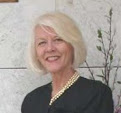It seems that the subject of Josiah Wedgwood, his pots, his family and his own story never seem to disappear from some facet of the public consciousness in today's world of instant international communication for the masses. In Josiah's time the world was much larger, meaning that one couldn't reach it so fast and easily as we can today when the world has been made much smaller by fast travel, fast communication and more global thinking. One of the reasons he and subjects involving him are so prevalent is that he was so many things - and the things in which he involved himself were important, and in many cases momentous. The building of the Trent & Mersey Canal affected so many in England; his scientific discoveries and inventions, and those of his descendants, still matter in our world (think photography for one). It is amazing to me how often Wedgwood-related subjects pop into the modern consciousness. Clicking the title of this post will show just one small example of my thoughts of the day. A musician in Indiana making a list of important happenings not only adds Josiah's founding of Wedgwood & Sons, but the photo that accompanies his article is a picture of a tribute to Josiah from our times. Josiah on the mind of a Nicaraguan musician raised in New Orleans and an expert on early music - go figure!
But this week, that's not all. At the University of Edinburgh, an archaeological dig has unearthed evidence of chemistry accoutrements made by Josiah & his firm as well as several other important artifacts and has the chemistry world quite excited. To read a bit about this news circling around the globe this week, one can go here to a post which includes a video interview with an expert on the subject. So we have an article on historic music and chemistry and Josiah all falling into my computer in one morning. It's an amazing world isn't it? There is one more thing that fell into my realm this morning, which is interesting, odd and in part inaccurate but certainly worth a quick read.
Galileo once used one to look at the sun... but it wasn’t as big as ours! So what has THIS to do with Josiah Wedgwood you ask? I did too and couldn't resist reading further in this article from The News, Portsmouth, England.
GALILEO had one so he could safely look at the sun.
Now schoolchildren are following in his footsteps by having their very own camera obscura – but on a much grander scale.
This octagonal white building, pictured below, is in fact a pin-hole camera and is one of just 12 of its kind in the UK.
It works by projecting light and reflections of the surrounding landscape via mirrors through a large lens in the roof, creating a moving image onto a white table below.
Youngsters at Wicor Primary School in Portchester have been using the £10,000 camera obscura – which means ‘dark room’ – to complement art, science and history lessons.
Alexandra Birch, 10, said: ‘The first time I went inside it was so exciting. I had never seen anything like it before, it was almost like stepping inside a time machine or a different period.
‘In my class we’ve been using it to draw trees and it has really helped me with my artwork because the quality of the image it reflects is so accurate.
‘It’s not just great for art, it also gives you an amazing sense of history and all the great people in the past who have used the camera obscura from the Greeks to famous painters.
As well as helping Galileo study the sun, the invention – which led to modern cameras – was also used by Dutch artist Vermeer to paint his intricate canvases and Josiah Wedgwood to sketch English countryside scenes for a 900-piece dinner service.
Elizabeth Harbridge, 10, added: ‘It is incredible to think we have just one of 12 camera obscuras in the whole country.'
For dramatic effect the reference to Josiah works, but it's of course not accurate. Josiah was a potter and a scientist, but not really an artist. Those images on the well-known dinner service he produced for Catherine the Great of Russia were not sketched by Josiah, but purchased by him from artists and / or commissioned by him for the purpose of providing Catherine with 952 pieces of dinner and dessert ware to remind her of her English homeland, where she never lived. It was by the images on the dishes which we lovingly call The Frog Service today that she knew of the surroundings of her English relatives.













